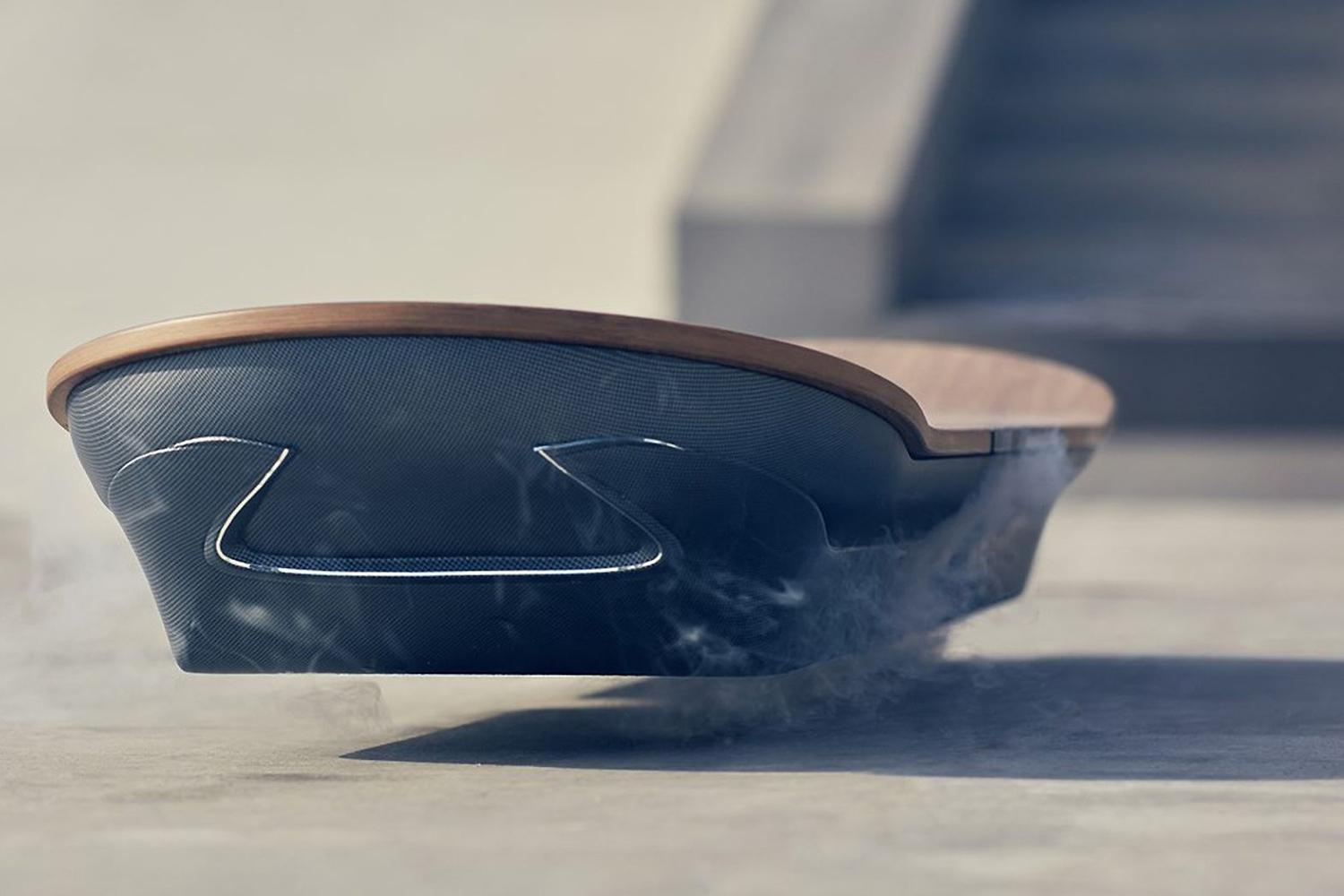In Back to the Future, the only thing that came close to upstaging Doc Brown’s DeLorean time machine was Marty McFly’s hoverboard.
Lexus has never tried to turn one of its cars into a time machine, but it does now claim to have built a genuine hoverboard, dubbed the Slide. Apparently, Lexus believes that where we’re going, we don’t need wheels.
The Slide debuted in a short video for the luxury brand’s “Amazing in Motion” publicity campaign, and is being tested in Barcelona, Lexus says. It’s one of four projects that will debut as part of the campaign.
The board uses magnetic levitation involving liquid-nitrogen-cooled superconductors and permanent magnets to achieve its magic trick. The liquid nitrogen is likely the source of the smoke you’ll see in the video. Otherwise, it probably wouldn’t be what you’d want to see spewing from a transportation device, futuristic or not.
Magnetic levitation or “mag-lev” has been employed under limited circumstances for high-speed trains. It uses opposing magnetic forces to repel a vehicle from a surface, allowing it to literally levitate.
This frictionless system allows trains to achieve high speeds more easily than they would on steel rails, and it makes for a pretty cool hoverboard demonstration too. But because the Slide likely needs magnets in the surface it travels over to repel it, that trick won’t work just anywhere.
Magnets embedded in the concrete of the skate park where Lexus demonstrated the hoverboard appear to be part of what makes it work, and would explain why it doesn’t really move around much in the video.
To make the most of this epic marketing opportunity, Lexus incorporated some design cues from its cars into the hoverboard. It features the same “spindle” grille that’s become the brand’s trademark, and bamboo trim of the kind used in certain Lexus models.
Don’t think Lexus is getting into the hoverboard business, though. The car maker says this board is only a prototype and will not be put on sale. So much for those Marty McFly fantasies.











